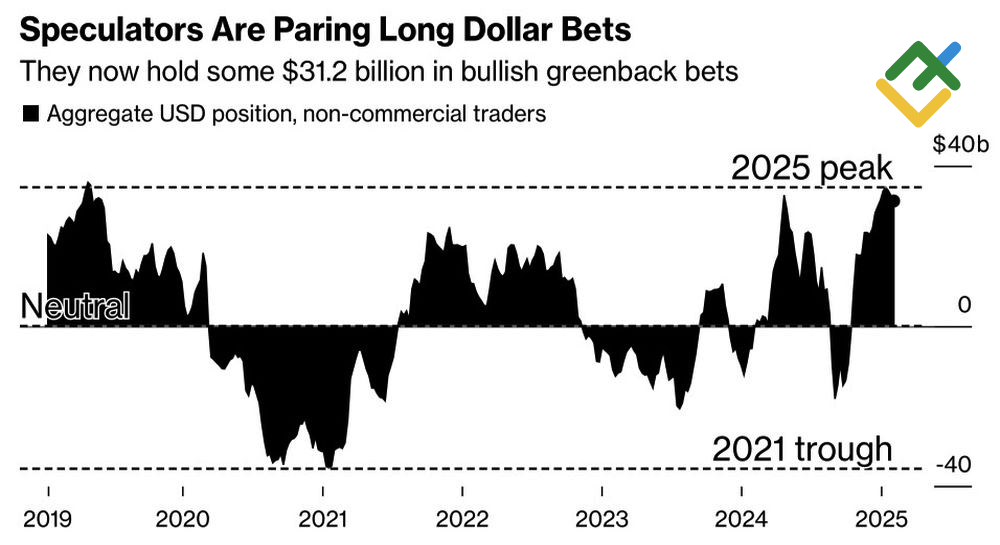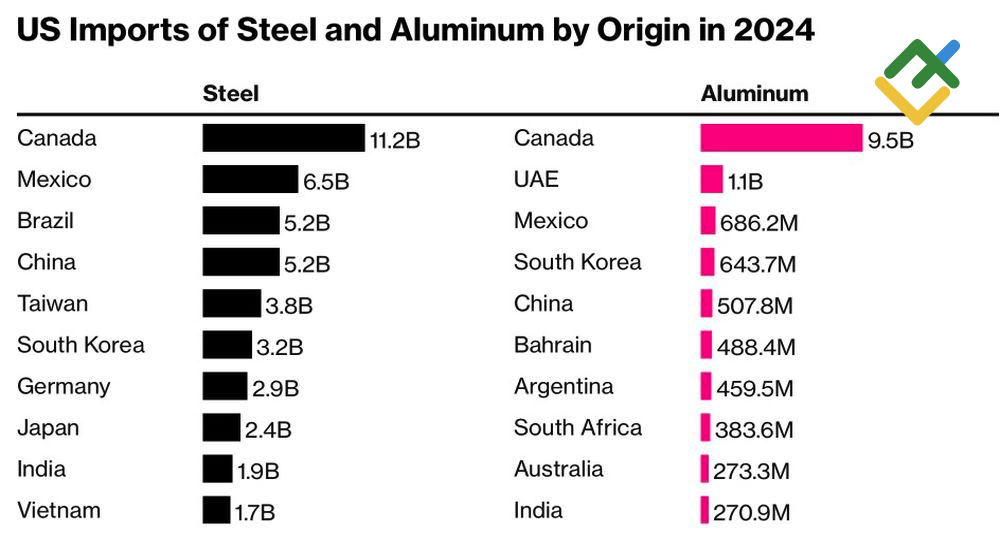
New tariffs on steel and aluminum have once again stirred financial markets. This has led to the emergence of a new price gap in the EURUSD pair. Let’s discuss this topic and develop a trading plan.
The article covers the following subjects:
Major Takeaways
- The US plans to implement a 25% tariff on steel and aluminum.
- Trump is considering reciprocal duties rather than universal ones.
- The EU is reevaluating its position on levies on the US.
- Short trades can be maintained as long as the EURUSD pair remains below 1.035.
Weekly US Dollar Fundamental Forecast
In the context of warfare, suddenness is often a critical component of success. When the enemy is rested and relaxed, it is the opportune moment to launch an attack. Weekends, in particular, present unique challenges in the financial markets. US dollar pairs on Forex opened with significant gaps for the second consecutive week, a consequence of President Donald Trump’s abrupt remarks regarding the imposition of tariffs. The White House initially targeted individual countries, subsequently expanding the scope to specific commodities, which has had a negative impact on the EURUSD rate.
The 25% tariffs on steel and aluminum imports have garnered support from US companies and are considered structural, making them more difficult to remove than general tariffs imposed on Mexico and Canada. Investors have come to recognize that President Trump’s threats are not going away, and regardless of any delays granted, the degree of these tariffs is expected to escalate, potentially leading to a sell-off in the EURUSD pair. Those speculators who reduced their net US dollar longs in the week leading up to February 4 are now grappling with the consequences.
Speculative Positions on US Dollar
Source: Bloomberg.
In 2023, the United States imported $82.1 billion worth of steel and $27.4 billion worth of aluminum and exported $43.3 and $14.3 billion, respectively. The main supplying countries were Canada, Mexico, Brazil, and China. According to Donald Trump, if other countries use import duties on the United States, why should the US not do the same? He is leaning towards reciprocal tariffs rather than universal tariffs of 10–20%.
US Imports of Steel and Aluminum
Source: Bloomberg.
The White House’s recent statements have prompted trade partners to consider reducing tariffs. Consequently, the EU is contemplating a reduction in the tariffs imposed on automobile imports from the United States, from 10% to approximately 2.5%, which are currently levied by the US. This could potentially lead to a reevaluation of the markets’ perspective on the matter, similar to what occurred during the first trade war. It is possible that the perception of Donald Trump as a tariff advocate may be inaccurate and that his use of threats is a means to reduce such barriers globally. However, it is important to note that this time may be different.
The US president has announced a strategy to boost budget revenues through customs duties and reduce spending by eliminating government positions. While this approach may initially lead to inflation, it is likely to be implemented in the long term. The Consumer Price Index (CPI) is projected to stabilize at 2.9% in January, while core inflation is anticipated to decelerate slightly from 3.2% to 3.1%, remaining significantly above the target range.
Coupled with strong labor market statistics, this allows the Fed to maintain the federal funds rate at 4.5% for an extended period. Following the release of the January employment data, the derivatives market increased the odds of only one step on the road to monetary expansion in 2025 from 42% to 54%.
Weekly EURUSD Trading Plan
Donald Trump’s tariff threats are no longer a mere speculative noise. As long as the EURUSD pair trades below 1.035, selling with targets at 1.012 and 1.000 can be considered.
This forecast is based on the analysis of fundamental factors, including official statements from financial institutions and regulators, various geopolitical and economic developments, and statistical data. Historical market data are also considered.
The content of this article reflects the author’s opinion and does not necessarily reflect the official position of LiteFinance broker. The material published on this page is provided for informational purposes only and should not be considered as the provision of investment advice for the purposes of Directive 2014/65/EU.
According to copyright law, this article is considered intellectual property, which includes a prohibition on copying and distributing it without consent.
{{value}} ( {{count}} {{title}} )
This post is originally published on LITEFINANCE.





